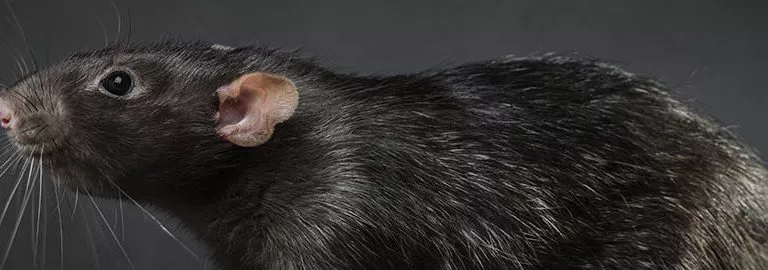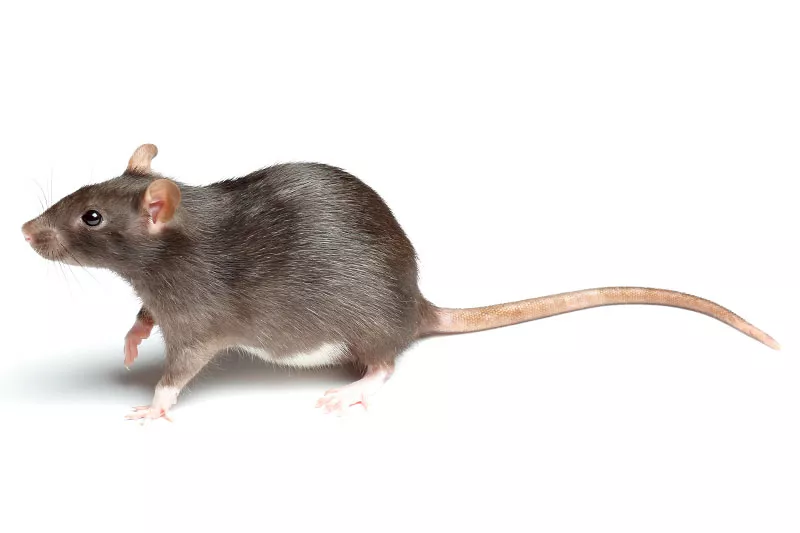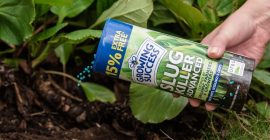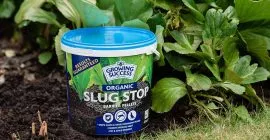If you’ve noticed droppings, chewed packaging, or scratching sounds at night, you may be wondering how to get rid of mice and rats quickly and safely. These common household pests can cause serious damage to your home and health, so taking action early is essential.
In this guide, we’ll show you how to identify, prevent, and get rid of mice and rats using trusted DeadFast rodent control products and expert advice.
Why It’s Important to Act Fast When You Want to Get Rid of Mice and Rats
Rodents breed rapidly and can cause extensive damage. Both rats and mice chew through cables, insulation, and wood, creating fire hazards and structural problems. They also contaminate food and surfaces, spreading disease through urine and droppings.
Taking quick action to remove them and prevent them from coming back is essential for your home’s safety and hygiene.
How to Identify Rats in Your Home or Garden
Rats are larger, more cautious, and generally more destructive than mice. Knowing the difference helps you choose the right rat control method.
Key characteristics
Size: 16-40cm in length
Weight: 150-300g
Eating habits: Eat 10-30g of food per day in 10+ meals
Drinking habits: Rats require more water than mice, between 15-60ml per day
Behaviour: Rats are neophobic, meaning that they dislike anything new and unfamiliar. They exhibit very cautious behaviours and take their time in exploring new things.
Did you know? Rats’ teeth grow five inches a year, only maintained by continuous grinding and gnawing to keep from outgrowing the rat’s mouth!
Common Signs of Rats
- Droppings – one of the key signs of rats is droppings left on their travel paths; these are banana-shaped for rats (10-20mm). Rats can leave up to 40 droppings per day.
- Grease marks – rats tend to leave greasy fur marks along their travel routes, for example, along skirting boards, floorboards, and walls.
- Gnawed areas – rats incessantly gnaw to keep their incisors short. You are likely to notice damaged areas on wood, plastic, or cables, and even holes in floorboards and walls. They can even chew through soft metals, such as aluminium.
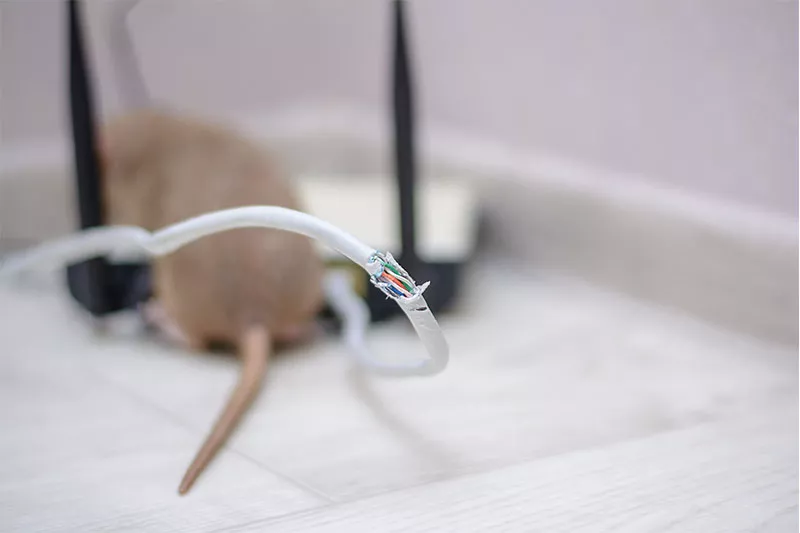
- Nests & Burrows – Brown Rats dwell in burrows, digging their nest and forming holes in the ground and on grassy embankments. Rats will also shred materials, such as cardboard and loft insulation, to build their nests.
- Noises – Scratching or scurrying sounds at night, often inside walls or ceilings, indicate rats or mice moving through hidden spaces in search of food or nesting materials.
Where Rats Hide Inside
- Kitchens – Areas that have food available, such as kitchens and pantries, provide an available source for rats. You may notice chewed food packets and cereal boxes, spilled or even missing food, where rats have snacked.
- Loft/ Attic – Look out for droppings and gnawed areas where rats are nesting. Rats will find safe spaces away from humans to nest, and dark and cluttered loft spaces provide the perfect environment for this.
- Walls / Ceilings – Cavity walls and ceilings give good travel routes for rats that are out of sight of humans. You may also notice scattering and heavy clambering noises when the rats are active, usually, and inconveniently for us, at night!
Where Rats Hide Outside
- Shed – Look out for entry points, such as holes where rats have burrowed around the edges of the shed. Clutter that accumulates in sheds also offers attractive accommodation for rats.
- Garage/ Outbuilding – Stored goods, as well as pet food and grains, typically found in garages and outbuildings, offer food sources to rats. Here you can find gnawed areas or spilled grain, even shredded materials that they use to line their nests.
- Decking – Check the condition of your decking. Has it been gnawed at? Are there signs of burrows along the edge? These could point to an infestation.
- Compost bins – Compost is highly attractive to rats as a source of food and shelter. Make sure that compost in bins is secured tightly with a lid and that there is no overspill.
- Overgrown Shrubbery – Vegetation such as shrubs and bushes provides a good place for rats to nest or burrow. Keep an eye out for holes and dug-out areas as a sign that rats could be around.
How to Identify Mice and Signs of an Infestation
Mice are smaller, more curious, and can squeeze through gaps as small as a pencil. They move quickly, nesting close to food sources.
Key characteristics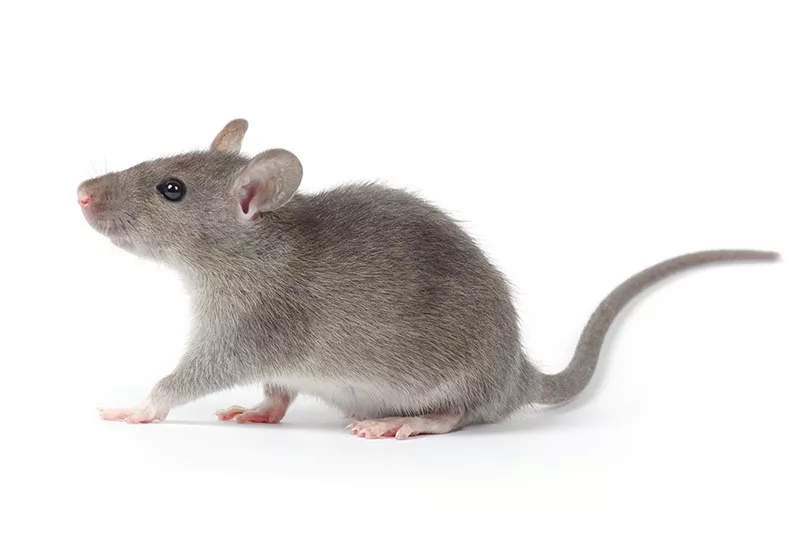
Size: 3-10cm in length
Weight: 25-30g
Eating habits: Eat 3g of food per day in 20+ meals
Drinking habits: Dietary water and can survive on only 3ml per day
Behaviour: Mice are very inquisitive and are investigative of their environment. This makes them much easier to trap than rats. They are also nocturnal, meaning they are most active searching for food and looking for materials to build their nest at night.
Did you know? A group of mice is aptly referred to as a “mischief”.
Common Signs of Mice
As mice are nocturnal, they are difficult for us to spot during the day. Instead, we tend to notice the questionable tracks they leave behind. Here are some tell-tale signs that there are mice around the home.
- Droppings: You are likely to see droppings left on their travel paths; these are the size of a grain of rice. Mice can leave up to 80 droppings per day.
- Gnaw marks: Chewed areas and small holes may be noticed on food packets and woodwork, where the rodents have gnawed continuously to keep their incisors short.
- Odour: Mice have a strong-smelling urine that leaves a musky, ammonia-like odour behind. This is common in drawers, cupboards, and pantries, where mice travel and mark their territory.
- Noise: Light scratching, particularly at night.
- Tracks: Fine dusty footprints or tail trails. Mice also typically leave greasy fur marks along their travel routes, for example, along skirting boards and walls.
Where Rats Hide Inside
During the cooler autumn and winter months, mice seek refuge in sheltered environments, and our homes provide a cosy option. Keep a lookout for mice in these common areas around the home.
- Kitchens – Exposed pipe work or cable entries provide a good entry point for mice. Also, make sure to check under or behind appliances, such as fridge freezers and cookers for places where mice may hide. Missing or spilled food, such as cereal boxes that have been disturbed, is another key sign of mice.
- Loft/ Attic – Loft insulation and fabrics provide a great source of material for them to build nests. Look out for any damage to stored materials, also droppings and musky odours that can be strong, particularly in small areas.
- Cellars – Mice can squeeze through the tiniest of spaces, including bricks and vents, giving them access to basements and cellars.
Where Rats Hide Outside
- Shed – Dark and cluttered corners in sheds provide the perfect environment for mice to build their nests. You are likely to find signs of mice in these spaces where mice are nesting and travelling.
- Garage/ Outbuilding – Stored goods, as well as pet food and grains, typically found in garages and outbuildings, offer food sources to mice. Here you can find gnawed areas or spilled grain, even shredded materials that they use to line their nests.
- Overgrown shrubbery – vegetation such as shrubs and bushes provides a good place of refuge for mice. Overhanging branches also allow mice to climb and access other places to explore for food and shelter.
Once you’ve confirmed mouse activity, act quickly with the right mouse control solution.
How to Prevent a Rodent Infestation
The best way to stop a rodent problem is to make your property less attractive to them. Here’s how to prevent mice and rats from moving in.
Seal Entry Points
- Block cracks, holes, and pipe gaps with wire mesh or steel wool.
- Fit covers to vents and drains.
- Check around garage doors, floorboards, and loft hatches.
Remove Food Sources
- Store food and pet feed in sealed containers.
- Clean up crumbs and spills immediately.
- Keep bins closed and compost bins secure.
- Avoid leaving bird or pet food outside overnight.
Maintain Outdoor Areas
- Keep grass and hedges trimmed.
- Remove clutter, wood piles, and debris that provide shelter.
- Regularly check sheds and greenhouses for signs of activity.
Use Repellents
Repellers emit high frequency sound waves that help keep rodents away without chemicals. They’re ideal for use in kitchens, garages, and lofts as a first line of defence.
How to Get Rid of Rats and Mice
If you already have rodents, don’t panic; there are several proven ways to tackle the problem effectively.
1. Use Rodenticides (Baits and Poisons)
Rodenticides are one of the most effective methods for controlling larger infestations. Always use bait responsibly and safely.
Deadfast Bait Stations are legally required for safe use and protect pets, children, and wildlife from accidental contact.
For best results, choose the best rat bait or mouse bait for your environment:
- DeadFast Soft Bait Sachets – These bait sachets are great for use in the kitchen and living areas. The soft paste formulation is highly palatable to compete with processed, stored, or prepared food.
- DeadFast Block Baits – Bait blocks that have excellent stability in conditions with high moisture and dust, such as garages, sheds, basements, and lofts.
Place bait stations along walls, near burrows, or behind appliances where rodents are active. Check and replenish regularly until activity stops.
2. Using Traps to Get Rid of Mice and Rats Quickly
Traps provide instant results and are ideal for smaller infestations or where poisons aren’t appropriate.
Try:
- DeadFast Traditional Easy Set Traps – Wooden wire snap traps with a pre-baited plastic cheese pedal suitable for both indoor and outdoor use. The trap is ready to use, but adding a small amount of peanut butter or chocolate spread to the yellow pedal can help attract mice even more effectively.
- DeadFast Power Kill Traps – A powerful trap featuring one-click setting and a High-Impact™ kill bar for a quick and humane kill.
For best results:
- Position traps along walls or runways where droppings are found.
- Bait traps with peanut butter or chocolate spread.
- Check traps daily and wear gloves when handling.
3. Repel and Protect
Once you’ve removed rodents, prevent them from returning by keeping repellers in place. They emit high frequency sound waves that discourage both rats and mice without harm. Combine with good hygiene and regular checks for long-term peace of mind.
Cleaning Up After an Infestation
After you’ve eliminated the problem, it’s essential to clean safely.
- Wear gloves and a mask.
- Disinfect all affected areas thoroughly.
- Remove and safely dispose of contaminated items, droppings, and nesting material.
- Continue monitoring for new signs for several weeks.
Your Complete Rodent Control Plan
- Identify whether you’re dealing with mice or rats.
- Prevent further access by sealing holes and removing attractants.
- Act fast using DeadFast traps, bait stations, or repellers.
- Clean and monitor to make sure rodents don’t return.
DeadFast makes it simple to choose the right product when deciding how to get rid of mice and rats safely.
For government advice on dealing with pests: GOV.UK – Pest Control and Rodents

